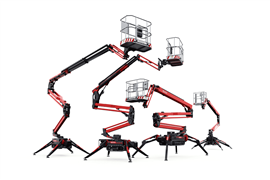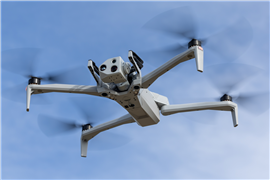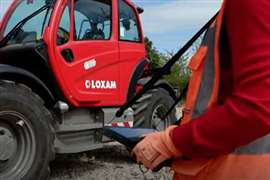Supply chain disruption - the impact
07 February 2022
The shortages resulting from supply chain challenges have been well-documented but where will it leave us in the years ahead?
Apart from the inevitable delays in delivery, the blockage in the supply chain has also had a significant influence on equipment price increases, which are not set to reduce once components become more readily available.
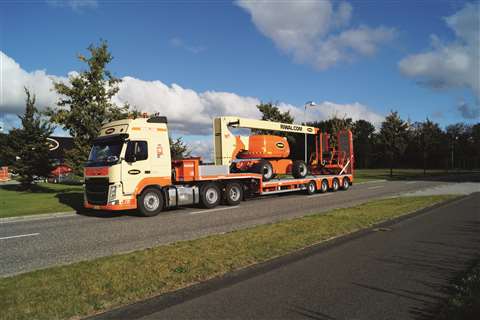
The affects of this could be felt most strongly by rental companies, left with the prospect of absorbing those costs or increasing their rental rates.
Thanks to its position as a leading rental company and distributor for JLG products, Riwal is well placed to access the future.
Starting with spare parts, Wesley Moeliker, Riwal’s procurement manager, points out that from 161 items now in back order, 100 of them have unknown lead times, meaning the supplier cannot say when those parts will be delivered.
For some parts that do have a delivery schedule, they will still not arrive until October or November this year. The result of which, is that machines are standing still.
“The problems were starting at the end of 2020 and the beginning of 2021,” says Moeliker.
“The biggest issue was electrical components. What we see now is that it is also plastic, rubber, etc. There are more and more separate items that we are facing problems with,” he adds.
Battery and component supply delays
Latterly, batteries have also been added to the list of often unavailable items. “I put an order in this week for a delivery in August and we hope they will be on time,” says Moeliker.
“Usually, you would have several options; if supplier A or B couldn’t deliver, for one reason or another, you could go to supplier C or D, but now you can call suppliers A-Z and there are still none available.”
While the delays in production and delivery of microchips and electrical components has been the key issue for spare parts delivery, shipments have also been adversely affected due to the availability and cost of shipping containers.
And, when delivery times are out of your hands, pre-planning can only result in limited success.
Moeliker says, “You can anticipate the need to raise stock levels but that is not an unlimited solution - you cannot grow your stock if there are no parts available.
Equipment spare parts from non-OEM suppliers
“The next step is to buy non-OEM spare parts. But this is an issue for products that are in warranty as you do not want to use non-OEM parts and critical safety items for these machines.”
From an insurance point of view, Moeliker continues, “If something happens to a machine in warranty and it is seen that you are using non-OEM equipment, then you have a problem, and it can be a big problem.”
Philippe Witte, who is Riwal’s group fleet and technical manager, explains that the company did anticipate the potential lack of equipment and placed a large order for machines in mid-2021.
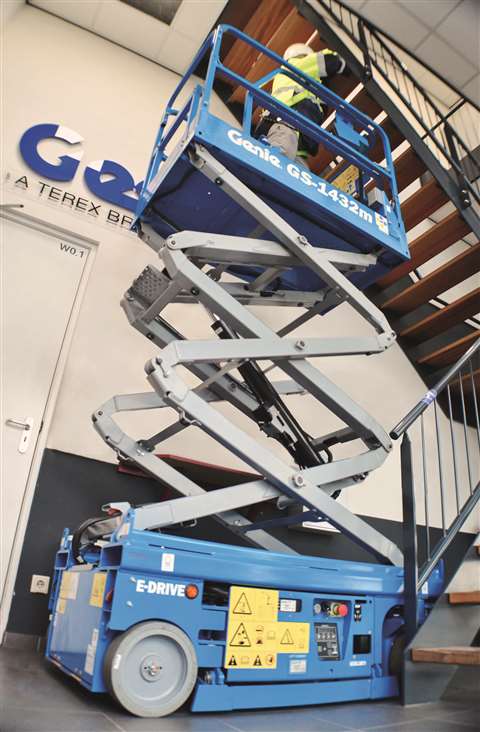 Terex (Genie) sees a multi-year growth cycle for the access industry. Image: Genie
Terex (Genie) sees a multi-year growth cycle for the access industry. Image: Genie
Long order lead times
“It looks like these machines are going to come in, so in that sense our customers will not feel it too much,” says Witte.
“But if you want to order something new today you are looking for early to a mid-2023 delivery, especially for the Ultra Booms.”
Indeed, the situation as a whole has not improved from a year ago.
“It’s a problem that is industry wide and it doesn’t matter which manufacturer you are talking to, they all have the same lead times, we just have to order early and that’s what we will have to do for 2023.”
Witte adds, however, “It cannot be guaranteed that a machine promised to come in during March or June will actually arrive at that time. By the end of 2023, hopefully we will see the lead times starting to come down to a normal time.”
Challenges of longer lead time for equipment
One of the biggest issues is that it drastically limits flexibility. “In an ideal world you would say, ‘today I would like to order for the next quarter, as I know what is happening with the economy and I know which products are in favour, and what projects are going on’.
“You would like to be more adaptable, and it is the flexibility that has been taken away by this situation. You have to look ahead and hope you did the right thing when you get to that time.”
Nevertheless, the lessons learned from the earlier days of the pandemic will help going forward. “We were more impacted in 2020,” says Witte, “For example, we could have sold more machines in 2020 if we had them.
“Once we knew Covid was going to be here to stay, we had greater line of sight, so we were more able to anticipate 2021.
Witte adds, “Most manufacturers expect to return to normality to some degree for the third or fourth quarter this year, with the supply chain ramping up and a more manageable number of people having to stay at home due to having Covid.”
How to respond to supply chain delays
Has Riwal aged its fleet in response to the pandemic and a lack of new machines being readily available?
As Witte explains, Riwal had started a strategy to hold on to machines for longer before the start of the pandemic.
However, he adds that extending the age of the fleet would have been an inevitable response to the pandemic if this policy had not been in place.
Equipment fleet investments
One area that has certainly been affected is the allocation of capital expenditure during the year.
“You usually make your orders in September, but like others, we have to pull that forward to June to make sure we order in time, then you have to make sure that it all fits as well as possible.”
As Witte reiterates the amount the company seeks to invest in equipment hasn’t changed but the process of doing it has completely changed.
The lack of equipment means, to a certain extent it is a seller’s market, with the supplier holding most of the cards.
“Suppliers understand that it’s difficult to negotiate – they can say that if you don’t take the products at their price, then your neighbour will.
Rising component costs for construction equipment
“However, they also have the same issue in their supply chain – a price of a component may be up by 30% and if they don’t like it then it will be sold to the car industry, for example, instead. So, this is fuelling the inflation of pricing.”
While these price rises may be inevitable, and usually get passed on to the customer in one way or another, the same is not true for rental rates, which have not gone up in line with the cost of the equipment.
As Witte points out a potential crisis looms if the situation is not rectified.
Equipment rental prices
“We really need to raise rental prices and I really hope the rest of the industry feels that way too, then we can start saving the bottom line.”
If rental rates are not increased, Witte says, “It will leave the industry in a difficult situation.
“Transport, gas, wages are all also going up, and if your revenue is not going with that then it leads to a problem - the whole industry needs to take this opportunity to raise rental rates.”
Confidence survey: access equipment industry
The drift towards higher prices and the impact on rental companies can be seen in the results of AI’s Confidence Survey, published in the November-December 2021 issue, which asked manufacturers and rental companies how strong they believed the access market would be in 2022.
The affect of supply chain issues were apparent in the survey when rental companies were asked if they would invest in more used equipment, and manufacturers quizzed over their plans to increase equipment prices.
Both the relevant graphs linked to those questions showed increases for 2022. (See the Price change graph on page 31). OEMs pointed to the increasing costs of material and components as a reason for the price hike.
So, how does this correlate with the forecast for rental rates?
The survey suggests that companies across the industry believe that rental rates will rise considerably in 2022.
Perhaps this means that, as Witte hopes, the rental sector will move as one to increase its pricing during this year.
Inflation and OEM price increases
Moreover, the clear indication from aerial platform OEMs is that equipment pricing will remain high, even once supply chain issues are solved.
In December, global investment bank Credit Suisse held its ninth Global Industrials Conference with Genie parent company Terex Corp, including its chairman and CEO John Garrison.
Quizzed on the issue of supply chains, Garrison said Terex, and its suppliers’ ability to meet the demands will be key issues in 2022.
Disruption to equipment manufacturing
“Similar to other industrial manufacturers and suppliers we are seeing persistent disruption in our factories and it’s really due to component shortages and compounded by logistics-related delays.
“The challenge is, it’s a broad base across multiple components.” Garrison adds, “We have a global supply chain, and logistics delays has impacted us.
“Any slight disruption in the logistics channel or there’s a supplier issue, because there’s no inventory in the system, we cannot absorb that variation, so you feel it immediately on the shop floor, which causes us then to make the decision; do we continue to produce or do we stop producing?”
The overriding choice across the company’s global production lines, is to continue to producing at whatever level possible.
If it is not possible, then Genie will take the affected product off the line and put it into what it calls ‘the hospital’, where it will stay until the required component is delivered and the machine is put back on the line.
As Garrison points out, “This is clearly not efficient, but we believe it’s the best way to meet the need of our customers and to get product to them, if we shut down hard we are never going to make up for that time.”
Supplier deliveries
The unique situation, Garrison adds, is that the demand is incredibly strong, “We are in a multi-year demand cycle, but for 2022 it’s about what suppliers can deliver to us to meet the needs of our customers, it’s a constant battle. Every single day is a new challenge.”
In a bid to ease the supply chain, Garrison has spent a large amount of time speaking directly with CEOs of tier two, tier three and tier four suppliers, along with tier one suppliers, as he says, to make them understand the ramifications of their ‘misses’, in terms of deliveries.
However, as he concedes, no company in the supply chain wants to disappoint customers down the line. Therefore, Garrison says it will work itself out eventually.
In the meantime, prices are going up, and they are unlikely to go back down.
“These are real cost increases that we are seeing.” And as he points out, Terex’s customers are seeing cost increases across their businesses too.
“There is inflation in the marketplace like we have not seen. These pricing actions will stick.” And the expectation is that those OEM prices will stick even if their component costs, that have been rising at unrealistic rate, level off, which he believes they will do.
Equipment sales on the rise
All this comes on the back of rocketing sales. As JLG can attest, it saw equipment sales soar for the three months leading to 21 December 2021, reporting an increase of 48% year-over-year.
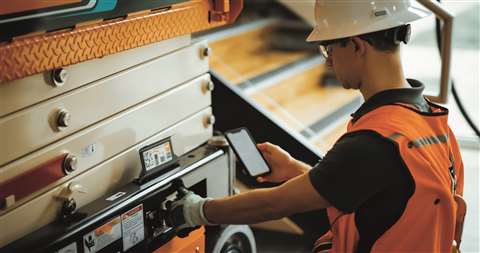 Oshkosh reports that new orders include strong price increases. Image: JLG
Oshkosh reports that new orders include strong price increases. Image: JLG
Despite demand for access equipment expected to remain strong for years to come, particularly in North America, the company said, supply chain issues and increasing materials costs were adding to a record-breaking backlog of $3.6 billion for Oshkosh’s access segment.
JLG’s $3.6 billion backlog – mostly of which is for orders to be delivered in 2022 – amounts to roughly 92% of JLG’s expected full-year sales.
How supply chain and material costs have impacted the AWP industry
Speaking during an investors call on 26 January this year, Oshkosh executives discussed how supply chain and material costs have impacted the industry.
“The industry has been through a shock in terms of the material cost escalation that we’ve seen and… the supply chain disruption that we’ve seen,” said John Pfiefer, Oshkosh president and CEO.
“Importantly, these orders include strong price increases, which provides better visibility to strong margins in the second half of 2022.”
Supply chain management
Pfiefer explained that much work has been done to change the way that the company manages its supply chain, including working with its supply base to improve their capacity, but also in qualifying hundreds of new suppliers to provide overall better capacity.
He said “We’ve completely revamped our price locking and our hedging strategies, so that when we’re in periods where we’re building backlog, we’re much more intense about how we’re locking in prices and are taking hedging strategies to protect ourselves if we’ve got backlog that builds six, nine, 12 months into the future.
“And of course, we’re also changing terms and conditions with a lot of our customers…if we’re building backlog way into the future that we have some ability to adjust price if there is significant movement in materials.”
Oshkosh said it expects price cost headwinds to remain at peak levels in the first quarter of 2022 with “meaningful improvement expected in the second quarter.”
STAY CONNECTED



Receive the information you need when you need it through our world-leading magazines, newsletters and daily briefings.
CONNECT WITH THE TEAM










